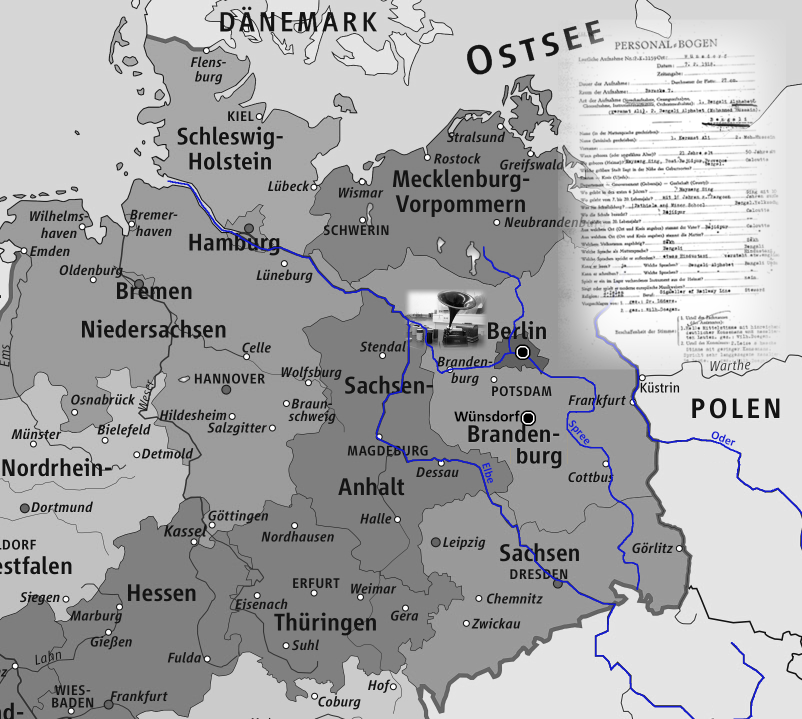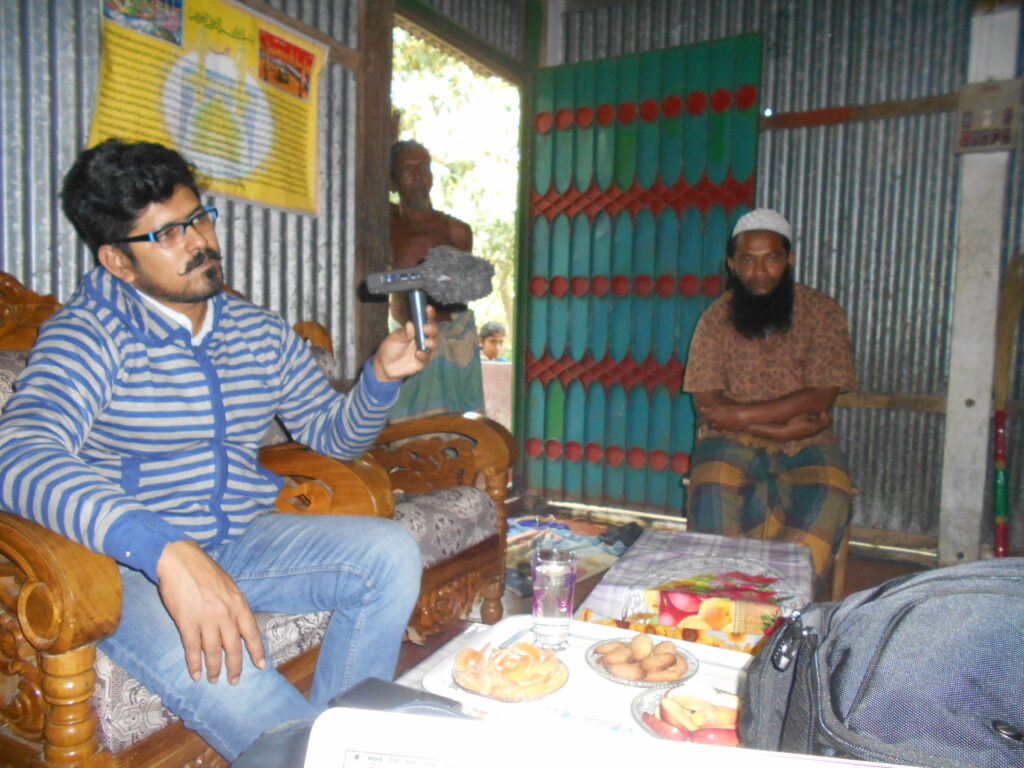
Ali Ahsan Explains
Ali Ahsan is a sound recordist from Kushtia in the west of Bangladesh, its border touching Nadia in West Bengal. That is a land fertile with song, where people talk in riddles. Both his maternal and paternal grandfathers—his nana and his dada—used to read and sing the puthi. His ears are hence more ready than mine to catch and write down the words of Keramat Ali’s melodic reading, as it was recorded by Wilhelm Doegen in the Prisoner of War camp in Wunsdorf, Germany, in 1918. The following is from my recorded conversation with him over the phone on 4 June 2019. I was at home in Kolkata and Ali was talking from Dhaka. The conversation happened in Bangla and the translation is mine.

Map of where the recording happened and where the archives are. Designed by Purba Rudra
Ali Ahsan’s telephonic conversation with me
‘I used to listen to my nana read the puthi. They have many Arabic and Farsi words. For the sake of the poetry. That is its problem, but that makes it unique too. Their speech is melodic’.
‘Is this an Islamic mythological story’?
‘It is a story about Medina. There are many stories about Medina. Shoitan or the Devil sees this woman who is pure, pious and beautiful, beloved of Allah (Allaro-piyara). He is attracted to her. But he fails to seduce her. Then one night he sends a dream to her husband. The husband sees that there is a lot of commotion outside, he takes it for real and so he gets up and goes to check. But he finds nothing. Then he comes back inside and finds his double, talking with his wife. The one who went out and the one in the room talk in the same way. The woman becomes very confused. She says, both of you will remain locked in this room tonight, tomorrow we will go to Ali and ask for justice. [It is impossible to translate or write down all the knowledge held in the sound. Ali Ahsan had said, ‘Tokhon ekdin raate taar husband shopno dekhe. . . tarpor shey confused hoye jaay’, using the English words husband and confused and they fit in so naturally with the Bangla. ‘Shey bole, tomra dujonei ei gharer modhye atka thakba’, Ali continues, and his way of speaking is marked by his place—a little bit Dhaka, a little bit Kushtia. There is a certain intimacy in this telling, which makes the characters into everyday people; this is no longer just a story about some distant holy land where Hazrat Ali, son-in-law of Hazrat Muhammad, blessed with divine powers, provides justice to people and shows them the way]
‘Ali, the Khalifa of Medina, finds a solution [ekta solution koren], because he is wise. Hazrat Muhammad has said that, if I am the Ocean of Knowledge (gyaner shagor), then Ali is its Doorway (shadar darja). There will be a verse of praise [bandana gaan] at the start of a puthi, it isn’t here in this recording’.

Ali Ahsan and I had gone to Noakhali. This photo is from Batoiya in Noakhali, taken on 25 November 2016.
There is no way of knowing what solution Hazrat Ali came up with because the second part of Keramat Ali’s song abruptly stops while the trial is on. This song does not begin where it starts in the recording, nor end where it stops. To know the story, we will need to find the puthi and our collective search has not yielded any conclusive result so far.
Ali Ahsan and I had talked about the question of literacy. ‘Nana used to say that there were two forms of song which the men sang without any instrumental accompaniment. One was shastor which was the telling of old (pouranic) tales and stories about kings and queens. The other was puthi. One night they would start telling a shastor and it would go on up to seven nights. They would sing and with one hand beat the rhythm. There was a special melody for these. And the women sang the geet at weddings and khatna [circumcision]’.
‘You think Keramat Ali actually knew the art of puthi-path’?
‘He surely did. He had a kind of puthi-pora gola [voice for melodic reading]. It is not possible to read the puthi in this way if you don’t have practice. It takes time for the melody to carve out a seat in the voice (shurta golay boshte shomoy laage)’.
‘Could they read and write, did the puthi singers have okkhor gyan (basic reading writing skill)’?
‘They needed to have okkhor gyan. These were long texts of several hundred pages’.
Be it as it may, Ali, an old friend, shared with me some music of Mymensingh, Kishoreganj, Netrokona, broadly the place of Keramat Ali. The singer is Himangshu Bhowmik, whom Ali recorded in Nehal Park in Kishoreganj town in August 2015. He cannot remember the date. Such and other voices Keramat Ali would be listening to in his time.
And then there was this song by one Zaker Mahmud, Beautiful!
And this great session with Abu Hanif Pir and others.
